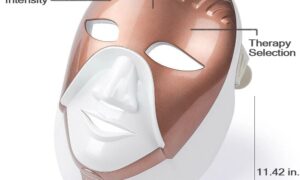As a professional bathtub refinisher, I’m often asked by homeowners if refinishing is a smart alternative to replacing their worn and dated tubs. After years in the business, I can confidently say the answer is usually yes! Not only can refinishing save thousands compared to the installation of a new tub, it also allows you to preserve your existing tub fixture.
In this comprehensive guide, I’ll share my insider knowledge and experience with bathtub refinishing. I’ll go over the process, costs, and results so you can make an informed decision about whether to refinish or replace your tub. As you’ll see, breathing new life into your old tub with a fresh coat of finish can pay off with huge dividends in terms of cost savings, convenience, and sustainability.
The Benefits of Bathtub Refinishing
So why should you consider refinishing your aging tub rather than ripping it out? There are several great reasons:
Cost Savings
The most compelling argument is the lower price tag. My estimates and Bathtub Query show refinishing typically costs around $400 to $1000, depending on the size and type of tub. Installing a brand new tub unit often runs $2000 to $4000 or more when you factor in the removal of the old one. That’s a massive cost difference! For a fraction of the replacement cost, you can make your old tub look fresh and new again.
Preserves Existing Tub
Tearing out your old tub also creates unnecessary waste. With refinishing, the existing bathtub fixture stays in place, avoiding the environmental impact of disposal. There’s something to be said for repurposing what’s already in place when possible.
Customizable Finish Options
Refinishing allows you to customize the new interior surface, whether you want a sleek glossy coating in white or a textured matte finish in navy. The color and finish options are nearly endless! This lets you update and personalize the look of your existing tub in whatever style you desire.
Faster Remodel Timeline
Installing a new tub means days of demolition, debris removal, possible plumbing work, and then installation of the new unit. Refinishing is generally a 1 to 2 day process start to finish, with much less disruption. You’ll be soaking in your tub that looks brand new in no time.
As you can see, the reasons to choose refinishing over replacement make for a very compelling case. You save tons of money and hassle while avoiding unnecessary waste – plus end up with a revitalized tub in any finish you fancy!
Evaluating if Your Tub is a Good Candidate
While refinishing has many advantages, it’s not ideal for every situation. Certain issues with your existing tub may mean replacement is a better option. From my experience, here are some factors to consider:
Surface Condition
Refinishing works best on tubs with surface damage like chipping, scratches, staining, and dullness. Severe rust, cracks, or leaks likely indicate replacement.
Material
Porcelain, enamel, acrylic, fiberglass, and cultured marble tubs are all candidates for refinishing, though porcelain requires special etching. Materials like wood or metal don’t take well to refinishing.
Age
Older tubs are good candidates as the materials hold up well, while newer tubs may have better success with DIY cleaning.
Bottom line – if your tub is structurally sound but suffering surface damage, refinishing is likely your most cost-effective option. For other issues, replacement may be the wiser route. Consult a professional to evaluate your specific tub.
Bathtub Refinishing Process Explained
Now that you know the basics, let’s get into the nitty-gritty of how the bathtub refinishing process actually works. Generally, it follows this timeline of key steps:
Cleaning and Surface Prep – Day 1
First, the tub surface is thoroughly cleaned using detergents and degreasers to remove any oils, soap scum, or residue. Next, sanding or chemical etching preps the tub surface to accept a new coating. Any chips or scratches are filled for smoothness.
Primer Coat
A bonding primer is sprayed on first to provide a base for the finish coating. This helps it adhere tightly.
Finish Coat Application – Day 2
The desired colored or textured finish coating is then sprayed on in several layers to achieve even coverage. This is where you get to see your chosen tub color come to life!
Clear Top Coat
Finally, a clear acrylic or polyurethane top coat is applied over the finish to seal and protect it. This adds a glossy sheen and ensures a durable, easy to clean surface.
That’s the basic process from start to finish. There are some additional details like masking and ventilating the area during spraying, followed by curing time before you can use the tub. But in the end, you’ve got a tub that looks factory-installed in 2 days or less!
The Cost of Bathtub Refinishing
As we’ve established, refinishing comes at a fraction of the price of replacement. But let’s break down cost factors in more detail.
DIY vs Professional Service
You can buy DIY refinishing kits for around $50 to $300. But unless you’re very experienced in applying tub coatings, I don’t recommend this route. Professional refinishing generally costs $400 to $1000 as mentioned earlier.
Size, Material, Location
Larger tubs naturally cost more than smaller ones, and materials like porcelain require special work adding some cost. Refinishing also costs a bit more for hard to access tubs.
Additional Repairs
Any rotted wood or plumbing repairs needed would be an add-on cost but still likely less than a full replacement.
In almost all cases, even with extra factors, refinishing wins financially. And pro service ensures optimal results.
Choosing Your New Bathtub Finish
Now for the fun part – picking your tub’s new interior finish! There are several materials and options:
Enamel or Epoxy Most common, provides a shiny, glass-smooth finish that’s durable and easy to clean. White is classic, but many color choices exist.
Acrylic Flexible, scratch-resistant acrylic finishes are also widely used. Easy to clean with more matte texture.
Urethane A two-part urethane coating gives a hard, glossy finish. It can withstand heavy use with little maintenance needed.
Color Considerations White and bone tones remain popular bathtub colors, but almond, biscuit, black, gray, silver, and even blue are also in demand. Feel free to get creative!
Texture Finishes Some tub coatings like acrylics provide more matte, grippy texture options as opposed to slippery gloss.
As you can see, you’ve got plenty of options for tailoring your new refinished tub look and feel. The choice comes down to the aesthetic and functional qualities you prefer. I’m happy to guide you in selecting the ideal finish.



































